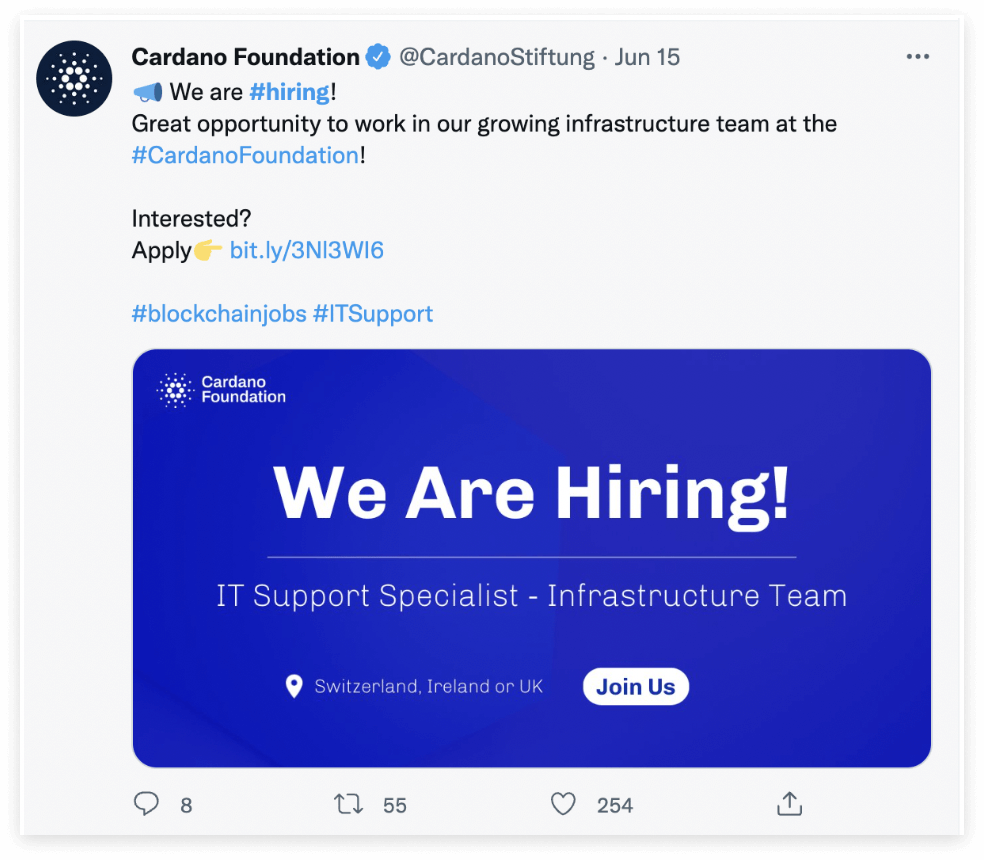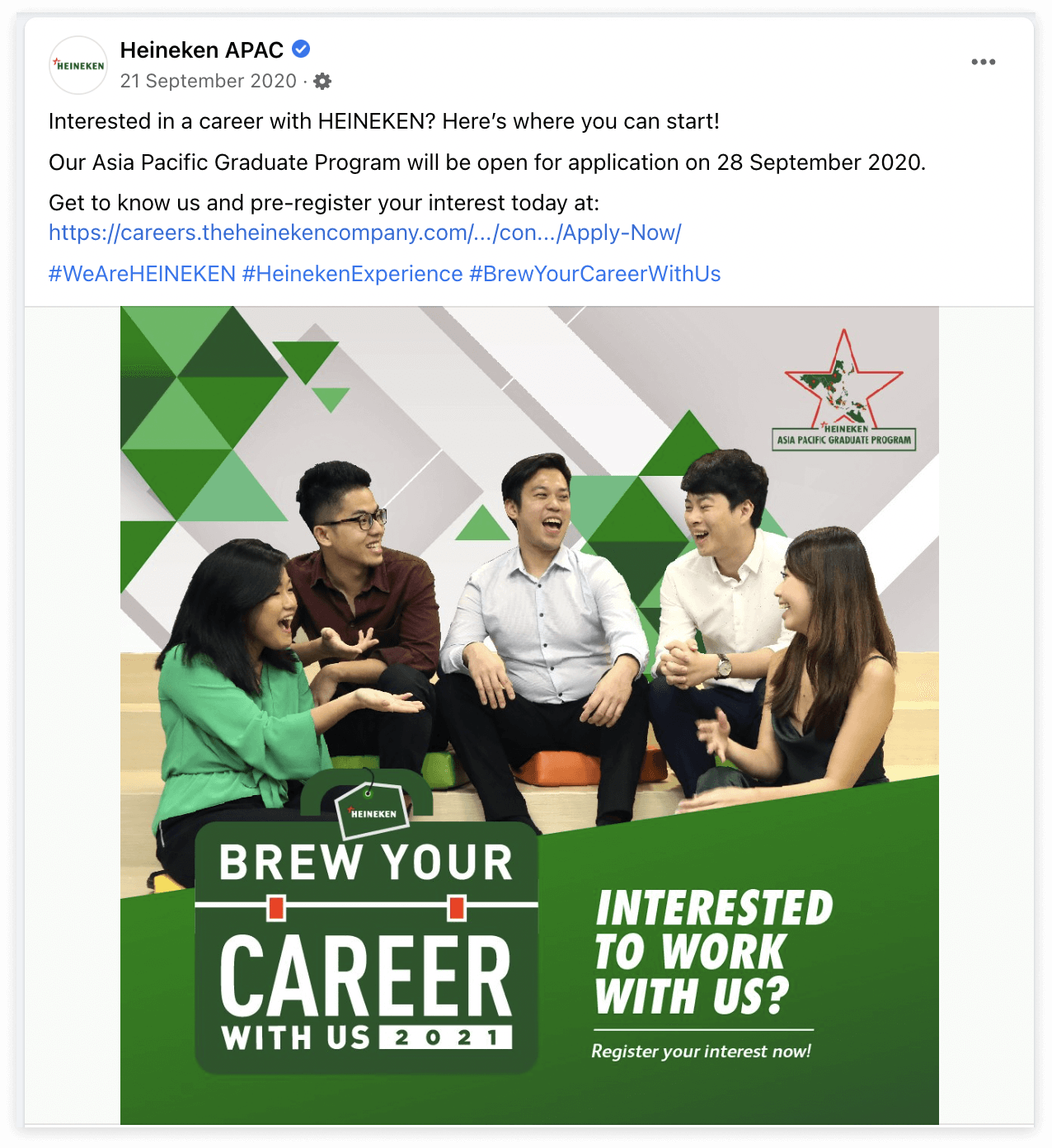How Social Media Recruiting Can Help You Find Your Ideal Talent

In this article, we’ll cover:
Although most of us use social media for entertainment or connecting with friends and family, the use of social media has transferred into the corporate world as well. Having a business presence on social media is crucial to maintaining brand presence, and also can help expand the business with recruitment.
With 79% of job hunters using social media as well as hiring platforms to land a job, recruiting via social media can be a lucrative move for your business.
What Is Social Media Recruiting?
Social media recruiting, also called social recruiting, involves utilizing social media platforms to search for, vet and hire candidates. Many recruiters or businesses now use social media alongside traditional hiring platforms, to broaden their search.
Social recruiting has advantages such as a broader search for candidates, providing more detail about candidates through their profiles, and putting a face to the name before interviews.
Despite the advantages, social media recruitment can have its drawbacks as well. Job hunters are aware of HR’s use of social media to vet candidates, with 14% changing their settings to private while actively seeking jobs.
Likewise, candidates with high quality profiles could create unconscious bias in the talent acquisition process, making an uneven playing field. Additionally, older generations are typically not as active on social media, so you might miss out on very experienced candidates for high-level roles.
How to Use Social Media for Recruiting
Although social media has a more casual tone than traditional hiring platforms, you still need to think of an approach which will garner high-quality talent, such as:
🔍 Have a clear goal and metrics
Clearly define the job opening and experience level of the role that you aim to fill. Keep in mind recruiting metrics such as the time to hire, source of candidate, number of applicants and number of positions. Using metrics as a baseline will keep your social media recruiting on track!
🔍 Know your ideal candidate
With 75% of workers aged 18-34 finding their most recent job via social media recruiting, having an ideal candidate in mind can help you narrow your search. Think of the industry, role and experience level the job requires, and then narrow down the skills which are essential to the role. You can use the skills as keywords in social media hiring posts, helping you attract the ideal candidate.
🔍 Share your job posting on social media
Share that you’re recruiting via social media with a post that captures the role and ideal candidate. Choose the channels you’d like to use for your social media recruiting and make posts which fit the style of the social media channel. Include links to the recruitment platform or application page to direct candidates to the right spot.
🔍 Measure results and optimize your social recruiting process
Have an interim check-in with your social media recruiting posts and analyze the engagement rate of the post, and response rate to the job posting. Not all social media is conducive to social recruiting, so choosing the most effective social media channels to focus on will yield greater results.
Analyze and filter through applicants to see which channels garnered the most serious job seekers and continue social recruiting on them. Including hashtags, links or photos might boost your posts’ reach, so reflect on the algorithm of your chosen social media channels.
Social Media Recruiting Strategies
Although using social media comes naturally to us nowadays, utilizing social media for talent acquisition requires some in-depth knowledge of those platforms and using social media in a unique way. Merging social recruiting with the existing brand page can be challenging, but there are ways to maximize the effectiveness of social media recruitment.
1. Establish an employee advocacy program
With current employees being considered the best resource for company information, implementing an employee advocacy program can encourage potential applicants to apply for your open roles.
Think of ways to encourage business representation among employees on social media, such as company merchandise or events that they can post about. Other ways to encourage advocacy include internal incentives for employees for sharing their work experiences via posts, especially on LinkedIn.
2. Define your employer brand in your social media profiles
Although companies initially took to social media to maintain a brand presence, including employer and employee perspectives can help you when social recruiting. Documenting employee events, achievements and company atmosphere allows job seekers to have a better understanding of the work life within the company.
3. Know where your ideal candidates spend time
As mentioned earlier, job seekers under 35 are making the most of social media recruiting. However, the social media recruitment strategy you choose needs to be tailored to your ideal candidates.
Linkedin is the most popular career site, and it is utilized mostly for career and industry-oriented professionals. However, if you are looking to hire in an academic or creative position, candidates will often have a strong presence on other social media platforms such as Twitter. Consider the age, experience and type of work your ideal candidate does, and use social media to recruit candidates accordingly.
4. Engage with your social audience frequently
Make sure your company page is frequently providing interactive and engaging content which can build brand trust. Create posts which encourage contribution from the audience, and reply with acknowledgement where possible. This will paint the image that your business has a grassroots approach to its branding, and will build trust when recruiting talent.
5. Check out your competitors
Businesses are already using social media to recruit candidates, so checking out other companies within your industry can help you form your own social media recruitment strategy. Take note of how the style of posts changes across channels, hashtags used, and length of posts.
6. Utilize advanced search
When using a recruiting platform such as LinkedIn, there are options to further narrow down your search for employees. If you are looking to approach candidates directly through LinkedIn, utilizing the advanced search can give you a handful of candidates who are ranked favorably by the platform.
Platforms for Social Media Recruiting
There are a plethora of social media sites around, however, only a handful of which is useful when social recruiting. To start off your social media recruiting strategy, consider the following sites:
LinkedIn is the largest job searching platform, with over 810 million users worldwide. The main demographic is young professionals, with over 60% of users between the ages of 25 and 34. LinkedIn’s job searching feature is used by 49 million people every week, so there is no shortage of candidates!
LinkedIn has an advanced search function for job seekers and recruiters, where you can filter by metrics such as job type, region and experience level. LinkedIn is a must for social media recruiting, as employees are 14x more likely to engage with content from their employer on LinkedIn, allowing hiring posts on social media to spread quickly.
Recruiting on Facebook can be done through your companies’ Facebook page. The majority of users on Facebook are between 25 and 34, and Facebook has more active users than LinkedIn, giving it the potential to yield more candidates.
Although fewer people use Facebook to seek work, the Facebook algorithm pushes posts to its most engaged users, and social media hiring posts can be promoted to ads for a fee, broadening reach.
With 58% of Twitter users using the platform to seek work, and 76% using the platform to view company profiles, Twitter is a fantastic option for social media recruitment. Like Facebook, talent acquisition posts can be promoted to ads in order to broaden reach. Hashtags are important to the Twitter algorithm, with 78% of fortune 500 companies using them in their social media recruitment strategy.
The most active industries are sales and IT, where recruiters and job seekers can use the platform to have active discussions on industry topics, making their Twitter profile a mini resume.
📍 TikTok Resumes
TikTok takes an innovative approach to social recruiting through its TikTok Resumes platform. Users can upload a video resume to highlight their skills and experience and show off their personality. 60% of TikTok users are in Gen Z, so it's a good option if you’re looking to hire fresh graduates or interns. Candidates will utilize hashtags to state their industry of work, making searches broader than advanced search options on other recruiting platforms.
Social Media Recruiting Examples
Check out these social media recruiting posts for inspiration on the style and content for your social media recruitment strategy.
#1 Social Media Recruiting on Twitter
This post below utilizes all of Twitter’s features to make an engaging social media hiring post.
Including hashtags and a link to the application makes the post concise and succinct. Likewise, the job is in the IT industry, a sector with a large presence on Twitter. Finally, relevant imagery can boost response rate as high as 94% – this post ticks all the boxes!

#2 Social Recruiting via LinkedIn
This social recruitment post takes advantage of LinkedIn’s demographic to advertise open roles. Hashtagging the relevant industries allows people who follow the hashtags to be notified. Likewise, the post focuses on the skills and personality of its desired employees, allowing users to relate to the post. Including a link to the recruitment platform is essential in social recruiting, as it gives candidates guidance on the next steps.

#3 Graduate Program Social Recruitment
This facebook recruitment post makes the most of Facebook's demographic to advertise their graduate program. Including a graphic illustrating company dynamics allows users to connect with the post – 62% of people looking for a job using social media to evaluate the company, so portraying the brand positively is important!

#4 Promoting your social recruitment post to an ad
If you have a range of roles, various locations or are about to start up a hiring campaign, promoting your social recruitment post to an ad can help notify candidates outside your network or following that you are actively recruiting on LinkedIn. This will improve reach if you are hiring employees for various departments, to avoid making repetitive social recruitment posts.

#5 Using employee advocacy to boost trust
Having the backing of an existing employee through shares or posts like these can help broaden reach to employees in the industry, but can also build trust in the company. Social recruiting posts that include employee input are 8x more likely to be engaged with than using social media for recruitment from the company’s page. Additionally, using employee advocacy can help point those open to working to the right talent acquisition specialists for the company!

🔑 Key Takeaways
There are plenty of options for channels, posts and methods to use in your social media recruiting strategy. Take advantage of each social media’s unique style, demographic and utilize existing employees in your social media recruitment posts.
Whether it's for specific roles, graduate programs or broadening talent acquisition pools, social media hiring posts can utilize hashtags, sharing features and employee input to point potential employees to your recruiting platform or talent acquisition specialists.
But first, build your company presence on social media to see the effects of a social media recruiting strategy!
Hire the best of the best from millions of active job seekers on CakeResume. Find the perfect candidate by filtering salary, job titles, industries, and locations and reach out to them to better your recruitment process.
--- Originally written by Bronte McNamara ---
More Career and Recruitment Resources

With the intention of helping job seekers to fully display their value, CakeResume creates an accessible free resume/CV/biodata builder, for users to build highly-customized resumes. Having a compelling resume is just like a piece of cake!






